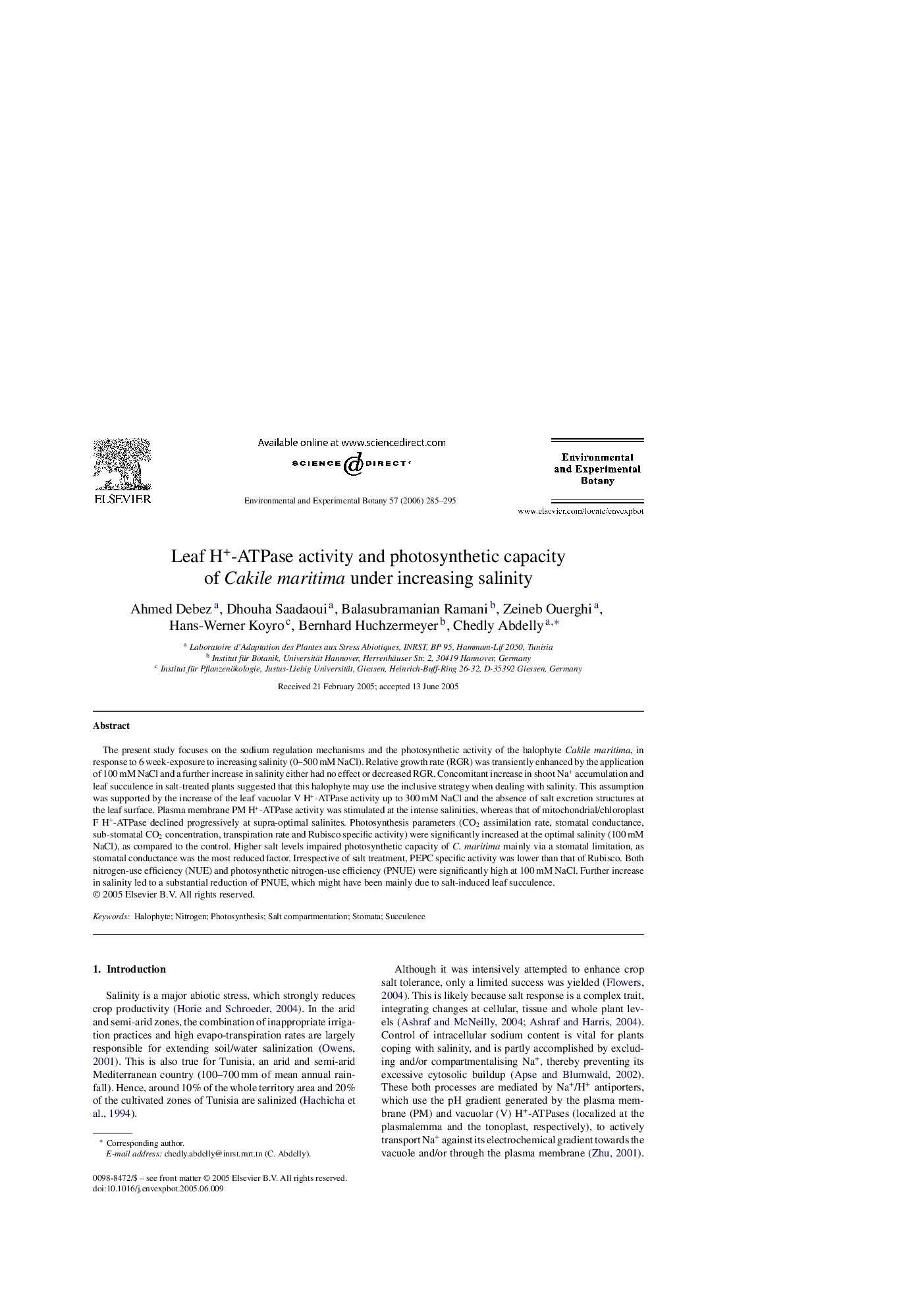| Article ID | Journal | Published Year | Pages | File Type |
|---|---|---|---|---|
| 4555555 | Environmental and Experimental Botany | 2006 | 11 Pages |
The present study focuses on the sodium regulation mechanisms and the photosynthetic activity of the halophyte Cakile maritima, in response to 6 week-exposure to increasing salinity (0–500 mM NaCl). Relative growth rate (RGR) was transiently enhanced by the application of 100 mM NaCl and a further increase in salinity either had no effect or decreased RGR. Concomitant increase in shoot Na+ accumulation and leaf succulence in salt-treated plants suggested that this halophyte may use the inclusive strategy when dealing with salinity. This assumption was supported by the increase of the leaf vacuolar V H+-ATPase activity up to 300 mM NaCl and the absence of salt excretion structures at the leaf surface. Plasma membrane PM H+-ATPase activity was stimulated at the intense salinities, whereas that of mitochondrial/chloroplast F H+-ATPase declined progressively at supra-optimal salinites. Photosynthesis parameters (CO2 assimilation rate, stomatal conductance, sub-stomatal CO2 concentration, transpiration rate and Rubisco specific activity) were significantly increased at the optimal salinity (100 mM NaCl), as compared to the control. Higher salt levels impaired photosynthetic capacity of C. maritima mainly via a stomatal limitation, as stomatal conductance was the most reduced factor. Irrespective of salt treatment, PEPC specific activity was lower than that of Rubisco. Both nitrogen-use efficiency (NUE) and photosynthetic nitrogen-use efficiency (PNUE) were significantly high at 100 mM NaCl. Further increase in salinity led to a substantial reduction of PNUE, which might have been mainly due to salt-induced leaf succulence.
